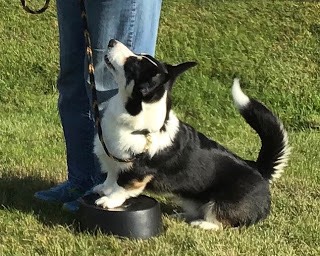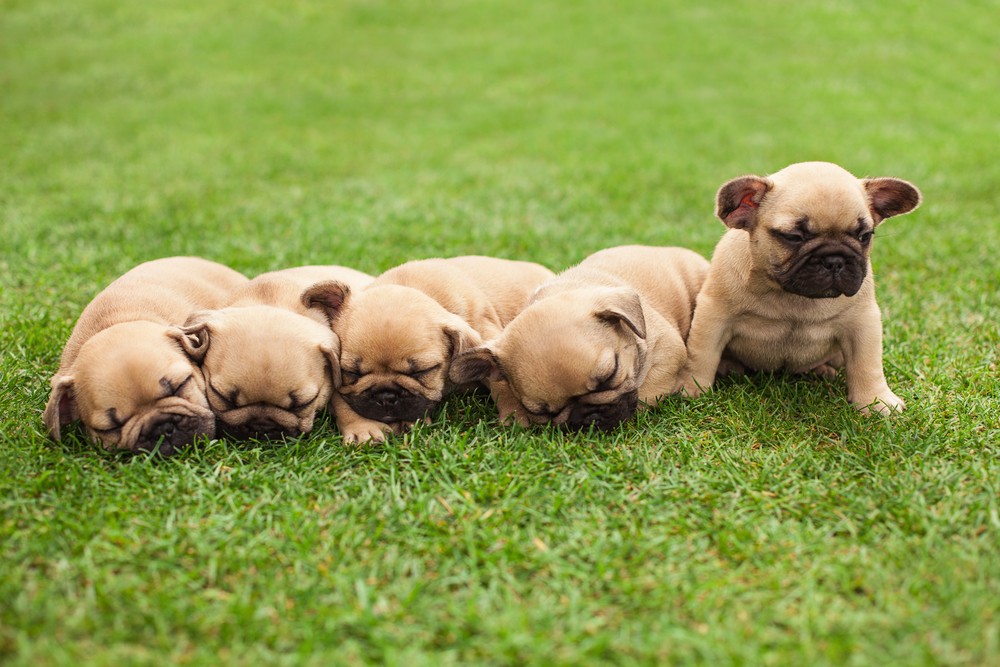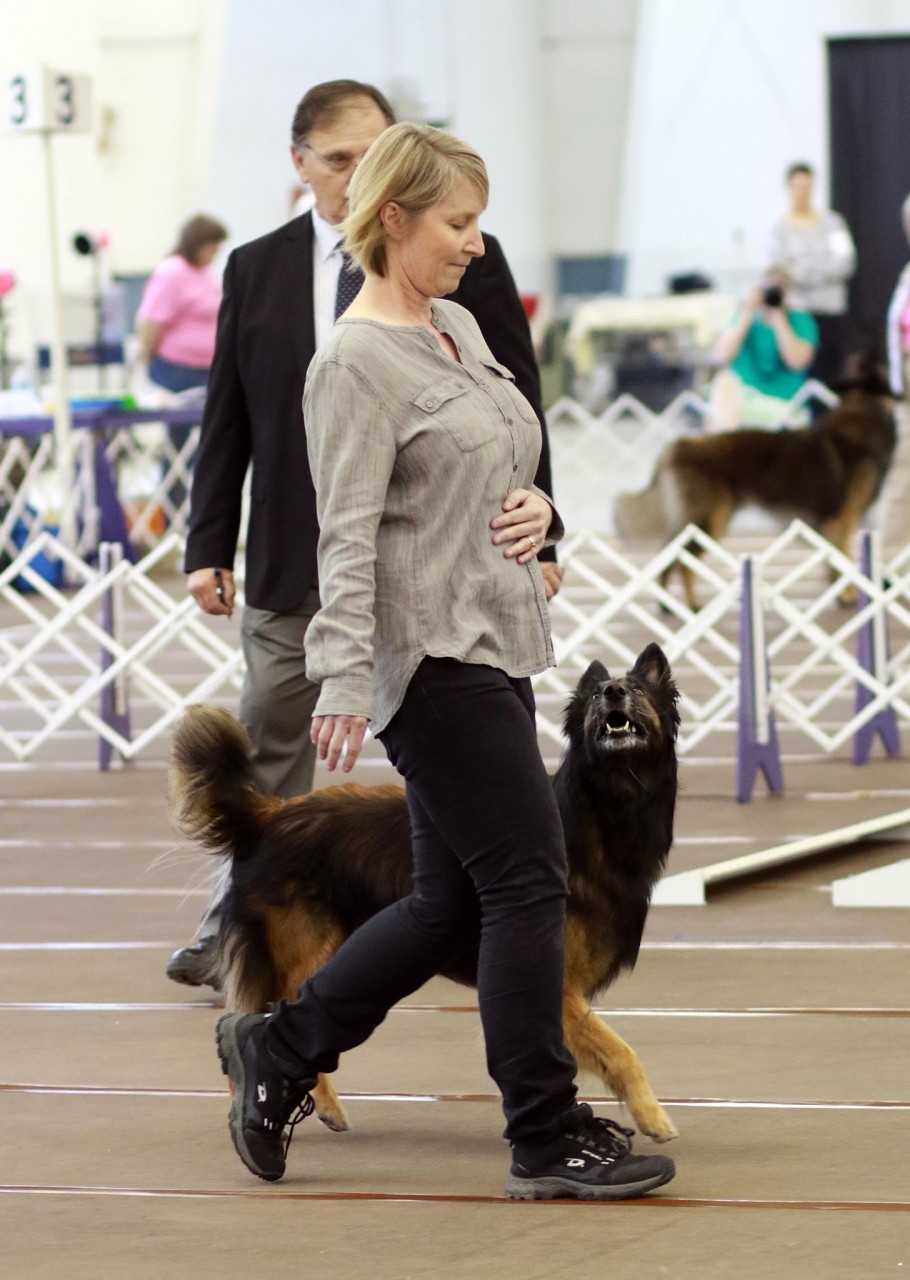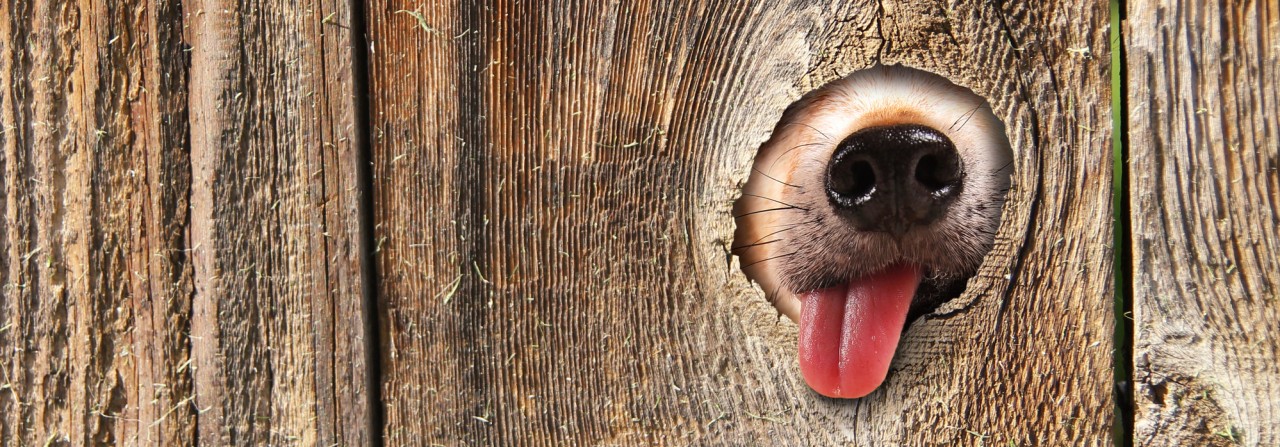In last week's blog post I introduced the idea of dog to child interactions – how to get the pair in the same space! Now let's look at what to do when the dog and child are interacting.
Dogs generally don't appreciate having anyone reach over them to pet the top of their heads. Instead, teach the child to pet the dog's chest, shoulders or side of the neck. If the dog is barely looking at the child's face and is just thrilled to be there with a happy, wagging body, then all is well and it isn't likely to matter what the child pets.
Years ago, I learned from Madeline Gabriel that children should be instructed to ask THE DOG for permission to visit. How clever is that? Yes, we all know about asking the dog's owner, but what about the dog??!! I'm sure each person has a different way of doing it, but here's how I have the child ask the dog:
Child stands or sits still, and calls to the dog. "Brito, do you want to be petted?" The child can bend over, pat their legs, make "pup pup pup!" sounds, etc.
So often we throw around the word, "foundations." In fact, when you hear people give advice it usually sounds something like "Just go back to foundations." Often, the advice is well intended, but it lacks substance.
The issue is that the word "foundations" is a buzzword.
I've been teaching agility seminars since the early 1990s. Back then, when I was young, R+ training was not commonly used, even in agility training, and it felt like an uphill battle. I used to be quite the zealot in my seminars. I was passionate in my presentation of dog's choice training. Passionate about my beliefs, my viewpoint and the way I choose to train. While I remember loving the job, it must have been difficult sometimes for the attendees to really hear my message through all that opinionated zeal. There's a lot of pressure from passion. It's hard to learn new stuff under pressure. I have a more empathetic approach now. I learned the hard way to practice inspiration rather than coerce others to train my way.
I want to:
- Keep track of where he is on each skill
- Keep all the information I've collected on different approaches to training that skill (from classes, webinars, books, in-person training with instructors, and my own experience with him)
- Not ignore the forest for the trees - remember where we're headed and prioritize what needs worked on next
- Make a training plan for a single day so I know which skills I'm working on that day and what I'm doing next with each (shaping, luring? criteria? how am I reinforcing?)
I've tried notebooks, and keeping a bullet journal worked great for a while.
But I really wanted to have all the information about each skill in one place. That's awkward to do on paper, where it's hard to keep inserting text "in the middle" of the journal instead of at the end. I also wanted quick links to online resources.
So I started looking for a digital app to do this for me.
I have been teaching an in person TEAM class for about a year and a half. When I decided I wanted to teach again, I wanted to do so to share all I had learned about good foundations.
I wanted to share how fun training really is when we break skills down into tiny pieces that the dogs can understand and use props to help them be correct. With a high success rate, the dogs and people are so much happier!
What I didn't want to do was to put another "novice obedience" class on the schedule that would likely attract students who only want to practice the Novice ring routine, lumping and rushing to get their dog ring ready for a trial that will be held in 2 months.
How do you get people to buy in to practicing these tiny bits and pieces and not rush it?
Today I'm joined by Sara Brueske to talk about the recent crazy in using multiple marker cues (and why they've become so popular!) plus her approach to using them as foundation for her training.
My perspective on helping dogs behave in a calm fashion may be different than how others address it.
That's because, in my opinion, the emotion of "calm" is not something you teach operantly (dog is aware that they are learning) as much as "acquire" through classical conditioning and specific environmental associations.
"Calm" is an emotional state that results naturally from several things:
- Providing your dog with adequate physical exercise to satiate the body
- Providing your dog with adequate mental stimulation to satiate the brain
- A temperament that is stable and unstressed
- Classically conditioning your dog to feel the emotion of "calm" in various places
For example, how I "feel" in a church is different than how I feel at a rock concert, because I have developed different associations with those two places. Your dog needs to see your house as more of a church while the backyard might remain the favored rock concert.
Want to improve your training accuracy and precision? How about helping your dog learn how to be an active partner in the training process? Would you like a way to build solid complex behaviors? Then targeting is the technique for you! Sure, shaping is fancy and fun, and luring is quick and easy, but targeting offers its own unique advantages.
Whenever I talk about teaching new behaviors I always say that I rely on three main techniques: shaping, luring, and targeting. Target training can be an incredibly versatile and useful way to develop new behaviors and refine existing ones. As with any other training technique, targeting can be accomplished in a smooth and precise manner or in a sloppy haphazard one, with the expected results.
Left to their own devices, what do puppies like to do?
They like to bark, play, run through the house (sometimes with muddy feet), jump on people, put things in their mouths and chew on them, eat tasty foods, explore, sniff things, dig holes in mud and sand and dirt, and a host of other things that I don't have time to mention. They do these things because they are baby dogs. Fortunately we can train our dogs to show more appropriate behaviors, but it takes time and the natural outcome of maturity. Puppies are a challenge.
"Urgh – she broke her start line," "He shut down when he realized I didn't have a cookie on me," "I don't know what to do next." You've heard each of these lines – perhaps adapted for your sport a little. I know it's a rare week that I don't hear something in this vein.
We train, work and play with living sentient beings. That is wonderful. Something to treasure. Something to complicate our lives. Sigh.
When things go wrong in dog training it's a little like standing at a crossroads in the middle of a very thick forest. It can feel like we have lots of choices to make and no way to see where the paths we are taking will lead. If you are isolated regionally from progressive positive training, choosing what and when to train can seem insurmountable.
This is an excerpt from one of Julie Symons' Obedience Games lectures along with a few other thoughts about dog training!
When it comes to dog training, everything we need to train and prepare for trialing can be overwhelming. Skills, precision, ring confidence, OUR confidence, weaning off primary and secondary reinforcers, etc. We all have goals and ambitions and want to do well.
We start that journey by building a strong emotional foundation when training our dogs. First and foremost we want a happy, motivated, secure, and engaged dog!! I don't worry about a lot of precision early on. The key is to prepare your dog by training smart and reinforce improvement on the way to perfection. The path to perfection or as close as we can get is the journey you take with your dog, not something you achieve all at once early in their career.
What does "training smart" mean?
It means being present when training and having a plan. It's not training when you don't feel well or in a bad mood. It means to make what training you can get to count and make a difference toward progressing.
If you don't have a lot of time to train, then make the most of the time you do have to make it productive and effective. Don't rush or get sloppy.
Make it your goal to rehearse correct behavior and be consistent with criteria as much as you can. And remember, no dog trainer trains perfectly. You constantly have to make quick decisions. To paraphrase Bob Bailey … you need to make a decision as the next one is right around the corner!
So you have to decide what/when to mark, when to release (ie., to avoid a crooked front), when to ask for more, etc. Don't fret over missed decisions, just get ready for the next one. Make it your goal to grow and expand as a trainer by experimenting and approaching it like an art form!
In part 1 of this blog post, I discussed management, training and the intersection of the two. Now let's turn our attention to the concept of maintenance.
Behaviors that I am maintaining are well trained, well understood, and have moved into the realm of habit.
Here's how that works:
After I have called my puppy into the house hundreds of times, and I have backed up her good responses with a cookie and my genuine praise, then I will stop rewarding most of her responses with a cookie and I'll offer only praise or a life reward (to be discussed in a further blog post). People often ask me how I know when it's time to start reducing reinforcement and the answer is relatively simple:
When I am no longer impressed by the good behavior.
I'll refer to these terms over time, so it might help if you have some idea what I'm talking about.
When I talk about management, I'm talking about preventing your puppy or dog from rehearsing bad behaviors, either while you decide to start training or until she outgrows whatever misbehavior is currently expressing itself or….forever, if that is your choice.
Management may involve applying external controls to the dog, or it may mean structuring the environment.
When asked "Who Are You?" regarding our involvement in dog training, we often have a split personality.
Am I a training geek? Amazed by all the nuances in training? In awe of my dog's ability to learn complex skills and tasks? Learning all that I can about the "science of training"? Exploring around the edges, such as with concept training?
Am I a dog sport trainer? Working with my own dogs as well as my students' dogs in helping them reach their goals of a true partnership in training and their competition goals? Exploring the most up-to-date training methods for my sport? Always on the search to make myself more clear and more valuable to my dog? Creating a partnership that includes concepts such as consent?
Am I a pet dog trainer? Working with inexperienced handlers who have yet to learn how to communicate with their dogs effectively to meet their seemingly simple goals of a well-mannered pet? I say seemingly, because in reality the work of a laymen is often ten-fold the work of an experienced trainer. Much of what they must learn, we now do by rote.
In truth I am all three. That doesn't mean, though, that all three of my "personalities" view training or apply the same techniques in the same way.
This is an excerpt from a free ebook by Liz Laidlaw for the FDSA Pet Professionals Program. See a link to the full book at the end of this post for more!
The science of learning is based in the academic realm of psychology. This means that some of the language of learning and cognition is jargon that may not be familiar, or may use words in a different context to their more popular usage. Trainers tend to talk a lot about the types of training and the "four quadrants," so we will discuss those here to get us started.
Hands up — who has trouble teaching the concept of duration to their dogs?
Maybe all your other dogs have just gotten it, but now you have one who, well, just doesn't. It can be tricky, especially with sensitive dogs who tend to shut down at the mere hint of a 'missed click.' You know the ones; they can offer you a nose touch multiple times, but each is so fast you struggle to time your marker to when the dog is actually touching your target. And if you are able to time that click just right, heaven help you if you delay it for a split second – your dog will interpret that as a 'mistake' and will be too traumatized to train again for a week.
Or the hyper motivated ones: they can respond to your down cue super-fast, but they appear to have rubber elbows – as soon as they touch the ground they bounce back up again! Sure, you can get the illusion of duration easily enough by feeding frantically in position, but as soon as the food slows down – boing! Dog is standing again!
Both of these types of dogs, the super sensitive and the super motivated, can be frustrating to train.
However, a year or so ago I fell over a neat little trick to help with both types of dog. I'm sure that it's not new (few things are!), and I doubt that it will be life changing for many of you, but if you are struggling to teach duration, it may be the key you've been looking for: I now teach duration behaviors using a focus point.
That bit about the cookie being.....right.....there! Why on earth would your puppy give you direct eye contact when he could be looking at the cookie?
This game teaches your puppy to look at your face instead of the cookie. The concept that working on the cookie directly will not make it become available is a difficult one! But really, teaching this concept is only a matter of well-timed clicking and treating.
You can show your puppy at a very young age how powerful it is to choose to "work for a living." Your puppy will learn here that offering behaviors that earn the click is how to make that cookie right there become available.



